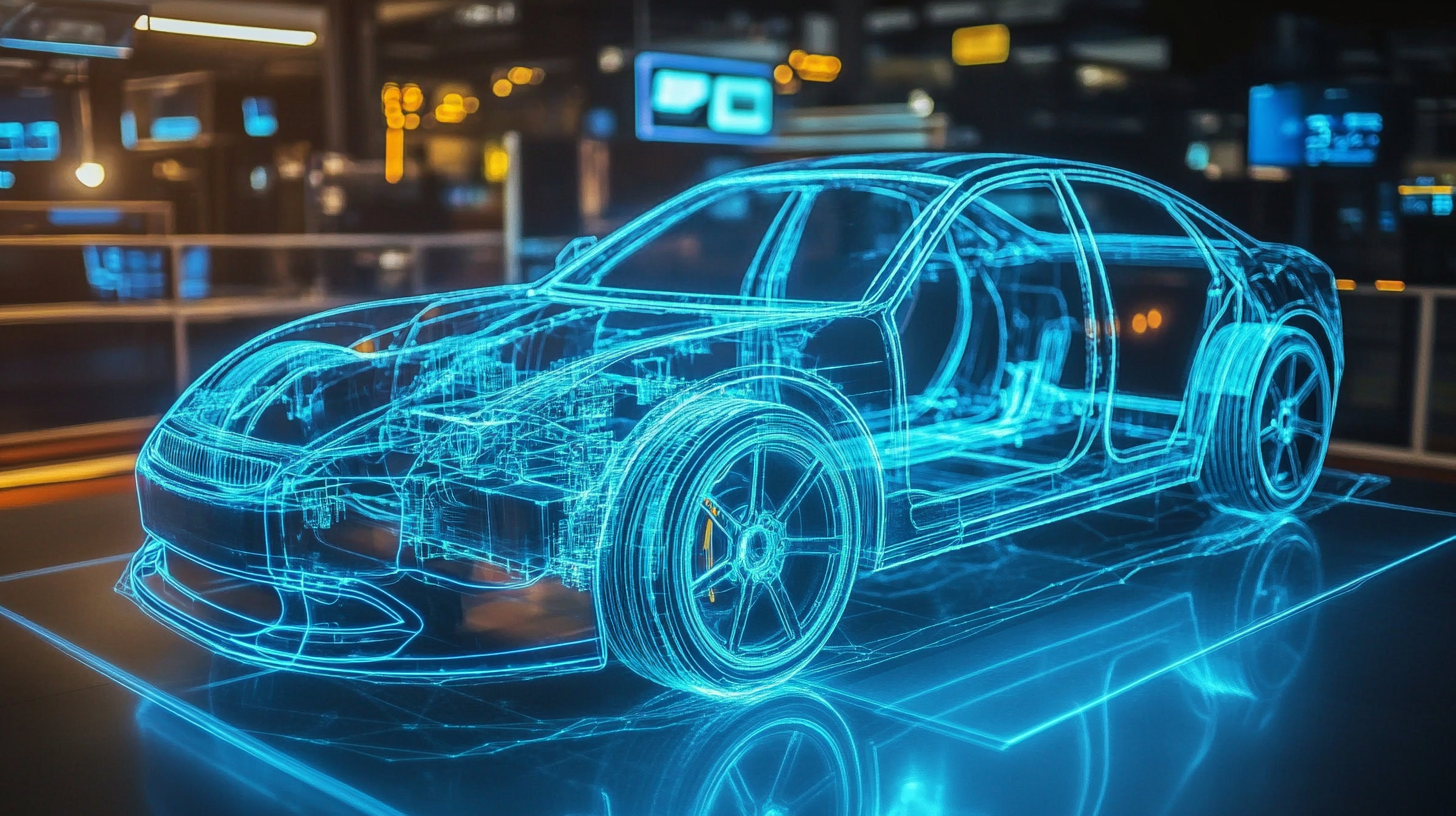- English
- русский
- العربية
- tiếng Việt
- Türkçe
- Deutsch
- 日本語
- 한국어
- ภาษาไทย
- Indonesia
- שפה עברית
- Português
- Español
- Français
- Italiano
- Nederlands
- Polski
- Svenska
- magyar
- Malay
- বাংলা ভাষার
- Dansk
- Suomi
- हिन्दी
- Pilipino
- Gaeilge
- تمل
- český
- ελληνικά
- український
- Javanese
- فارسی
- தமிழ்
- తెలుగు
- नेपाली
- Burmese
- български
- ລາວ
- Latine
- Қазақша
- Euskal
- Azərbaycan
- Slovenský jazyk
- Македонски
- Lietuvos
- Eesti Keel
- Română
- Slovenski
- मराठी
- Srpski језик

Essential Guide to Choosing the Best Automotive Sensors for Your Vehicle Needs
 In the evolving landscape of automotive technology, the significance of
Automotive Sensors cannot be overstated. According to a report by Markets and Markets, the global automotive sensors market is projected to reach approximately $34.4 billion by 2025, driven by increasing demands for advanced safety features and enhanced vehicle performance.
These sensors play a critical role in various systems, from powertrains to safety mechanisms, ensuring that vehicles operate efficiently and safely.
As consumers become more aware of their vehicle needs, understanding the multi-faceted applications and types of automotive sensors becomes essential.
This guide aims to equip vehicle owners with the necessary knowledge to select the best automotive sensors, tailored to their individual needs and preferences, thereby enhancing their driving experience and vehicle reliability.
In the evolving landscape of automotive technology, the significance of
Automotive Sensors cannot be overstated. According to a report by Markets and Markets, the global automotive sensors market is projected to reach approximately $34.4 billion by 2025, driven by increasing demands for advanced safety features and enhanced vehicle performance.
These sensors play a critical role in various systems, from powertrains to safety mechanisms, ensuring that vehicles operate efficiently and safely.
As consumers become more aware of their vehicle needs, understanding the multi-faceted applications and types of automotive sensors becomes essential.
This guide aims to equip vehicle owners with the necessary knowledge to select the best automotive sensors, tailored to their individual needs and preferences, thereby enhancing their driving experience and vehicle reliability.
Key Points:
- Market Growth: Projected to reach $34.4 billion by 2025.
- Role of Sensors: Critical for safety and performance in vehicles.
- Consumer Awareness: Essential for selecting the right sensors.
Understanding Automotive Sensors: Types and Their Key Features
Automotive sensors play a critical role in modern vehicles, enhancing safety, efficiency, and performance.
Understanding the various types of sensors available can help drivers choose the right components to meet their vehicle needs.
Among the most common sensors are temperature sensors, which monitor the engine's heat to prevent overheating, and pressure sensors, which keep track of fluid levels in the engine and braking systems. These sensors provide vital data that enables the vehicle's computer to make real-time adjustments, improving overall functionality.
Another essential category of sensors includes proximity and radar sensors,
which are increasingly used for advanced driver-assistance systems (ADAS). These sensors help detect obstacles and monitor distances, contributing to features such as automatic braking and adaptive cruise control. Moreover, oxygen sensors are crucial for maintaining optimal fuel efficiency and reducing emissions by ensuring the engine is running with the right air-fuel ratio.
Each of these sensors has unique key features that cater to specific vehicle requirements, making it essential to understand their function for effective decision-making when upgrading or replacing components.
The Importance of Sensor Accuracy: Industry Standards and Specifications
When selecting automotive sensors, understanding the significance of sensor accuracy is paramount. The accuracy of automotive sensors directly impacts vehicle performance, safety, and compliance with industry standards. For instance, the ISO 26262 standard emphasizes the importance of functional safety in the automotive domain, stipulating that sensors must meet stringent accuracy requirements to prevent malfunctions that could endanger users. Reports indicate that around 30% of vehicle malfunctions are attributed to faulty sensors, underscoring the critical need for high-accuracy components.
Additionally, data from the Society of Automotive Engineers (SAE) shows that advancements in sensor technologies have enabled improved precision levels, with some modern sensors achieving accuracy rates of up to 99.5%. This accuracy is essential not only for vehicle operation but also for enabling advanced driver-assistance systems (ADAS) that rely on precise data to function effectively. Proper calibration and adherence to specifications also play a crucial role, as even minor deviations can lead to significant performance issues. Companies developing automotive sensors should prioritize these standards to ensure reliability and enhance overall vehicle safety.

Selecting Sensors Based on Vehicle Types: A Comprehensive Overview
When selecting automotive sensors for your vehicle, it’s crucial to consider the type of vehicle you own, as different models and makes require specific sensor functionalities. For instance, passenger cars typically rely on sensors such as oxygen, temperature, and pressure sensors to monitor engine performance and emissions, while commercial vehicles often need more robust systems like tire pressure monitoring and collision avoidance sensors. According to a recent report by MarketsandMarkets, the global automotive sensor market is anticipated to grow from $22.0 billion in 2020 to $38.2 billion by 2025, highlighting the increasing demand for customized sensor solutions across various vehicle types.
Tip: Always check compatibility with your specific vehicle model before purchasing sensors, as even minor differences in make and year can affect sensor performance.
Furthermore, electric and hybrid vehicles are becoming more prevalent, necessitating specialized sensors for battery management and energy efficiency. These vehicles often require more advanced sensors to monitor and optimize power usage, as evidenced by a study from Allied Market Research projecting that the market for electric vehicle sensors will reach $27.5 billion by 2027. Ensuring you have the right sensors installed not only improves vehicle efficiency but also enhances safety features.
Tip: Invest in high-quality sensors from reputable manufacturers to guarantee reliability and longevity, reducing the likelihood of costly replacements.
Trends in Automotive Sensor Technologies: Current Innovations and Future Prospects
The automotive industry is undergoing a significant transformation, primarily driven by advancements in sensor technology. Current innovations are paving the way for enhanced vehicle safety, efficiency, and user experience. From radar and LIDAR systems that enable advanced driver-assistance systems (ADAS) to innovative camera technologies that support features like lane-keeping assistance and pedestrian detection, the landscape of automotive sensors is rapidly evolving. These technologies not only improve safety on the roads but also contribute to the development of autonomous driving capabilities.
Looking into the future, the prospects for automotive sensor technologies appear even more promising. With the growing demand for smart vehicles, we can expect an increase in the integration of Internet of Things (IoT) capabilities within automotive sensors. This will enable real-time data collection and analysis, improving vehicle diagnostics and maintenance. Additionally, advancements in artificial intelligence and machine learning will enhance the functionality of these sensors, allowing for more intuitive interactions between vehicles and drivers. As these trends continue to emerge, it is essential for vehicle owners and manufacturers alike to stay informed about the latest developments in automotive sensor technologies to make the best choices for their needs.
Trends in Automotive Sensor Technologies
This chart illustrates the market share percentages of various types of automotive sensors, reflecting current trends in the automotive sensor technologies and innovations.
Cost vs. Performance: Finding the Right Balance for Your Vehicle's Sensor Needs
When evaluating the costs and performance of automotive sensors for your vehicle's needs,
it's essential to strike a balance that maximizes safety and efficiency. With the rise of autonomous vehicles, manufacturers are faced with the challenge of determining the optimal number of sensors required.
The price range for these sensors varies significantly—from as low as $15 to upwards of $1,000.
This disparity raises critical questions regarding their necessity and efficiency within the vehicle’s ecosystem.

